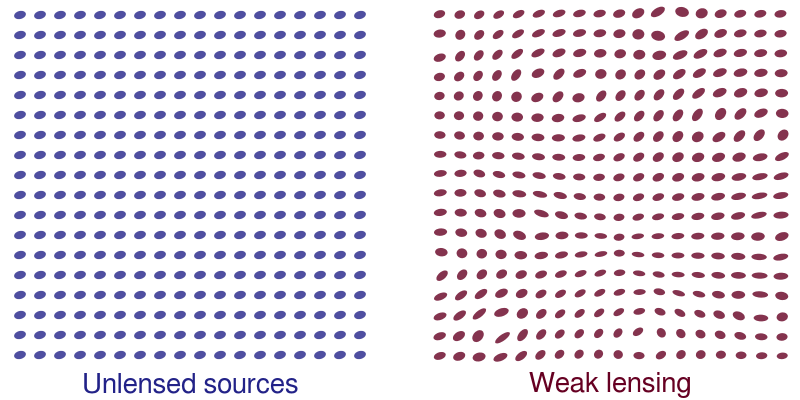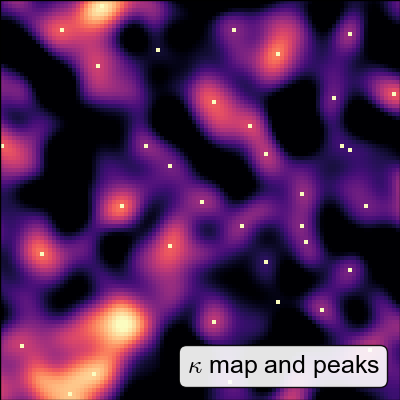What is weak lensing?
Gravitational lensing is a phenomenon where gravity deflects light, causing distortion in the images of distant galaxies as the light is perturbed on its way to the observer. When this distortion is weak, it is referred to as weak lensing.
What are peak counts?
Weak-lensing peaks are local maxima of a lensing map. They are direct traces of dark-matter halos which are very massive structures in the Universe.
As the population of halos (mass function) depends strongly on cosmology, peaks help constraining cosmological parameters. Promising results from peaks have already been shown in literature.
A new model for prediction
My PhD research focuses on developing a novel prediction model for weak-lensing peak counts using a stochastic forward approach. The summary of the model is as follows:
I have demonstrated that, in this way, accurate predictions can be obtained two orders of magnitude faster than $N$-body simulations, the traditional method. The model is implemented as a public software in C called Camelus.
Three advantages can be outlined from this model:
- Fast - only few seconds for creating a 25-deg$^2$ field, without MPI or GPU programming;
- Flexible - straightforward to include observational effects (e.g. photo-$z$ errors, masks) and additional features (e.g. intrinsic alignment, baryonic effects);
- Full PDF information - allow more flexible constraint methods such as varying covariances, $p$-value evaluation, approximate Bayesian computation, etc.



